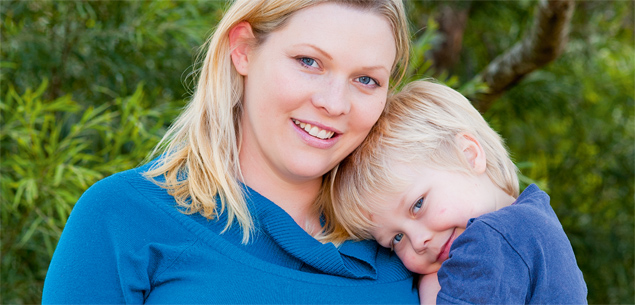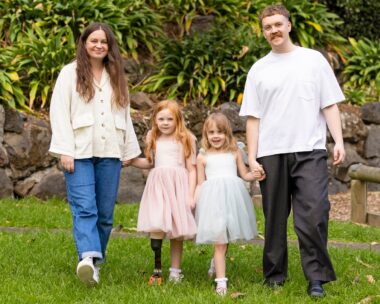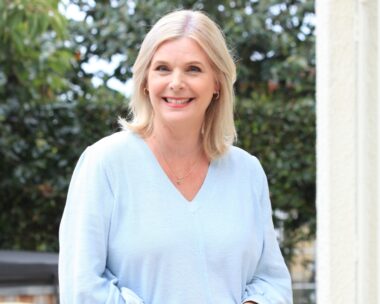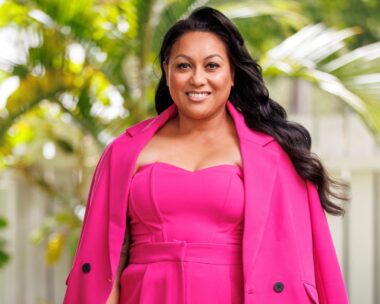Auckland mum Nichola Jones winces as she places a protective hand on her unborn baby. An allergy linked to her pregnancy means her belly is covered in welts that are so painful and itchy she’s been unable to enjoy tight cuddles with her son Tyler (3), and can’t rest her hand on her tummy like most expectant mums.
“The only way to describe it is that someone has sliced your skin up with a blade and poured salt and acid into the wound,” she explains, sitting carefully on the couch of her home. “It’s like you’re being set on fire. You can’t predict when it is going to flare up. The blisters are so painful because they get big and sore and itchy as well. And then they can bleed so it’s like having open wounds.”
The blisters aren’t confined to her stomach – as her pregnancy progresses, they have started spreading across her back, arms, palms of her hands, feet and down her legs.
“With this pregnancy, I have felt quite disconnected to the baby. Not being able to touch my belly makes it’s even harder for me to bond,” she says.
Nichola (30) suffers from the allergy pemphigoid gestationis, a skin disease thought to be caused by her immune system attacking the baby’s placenta, prompting the blisters to form.
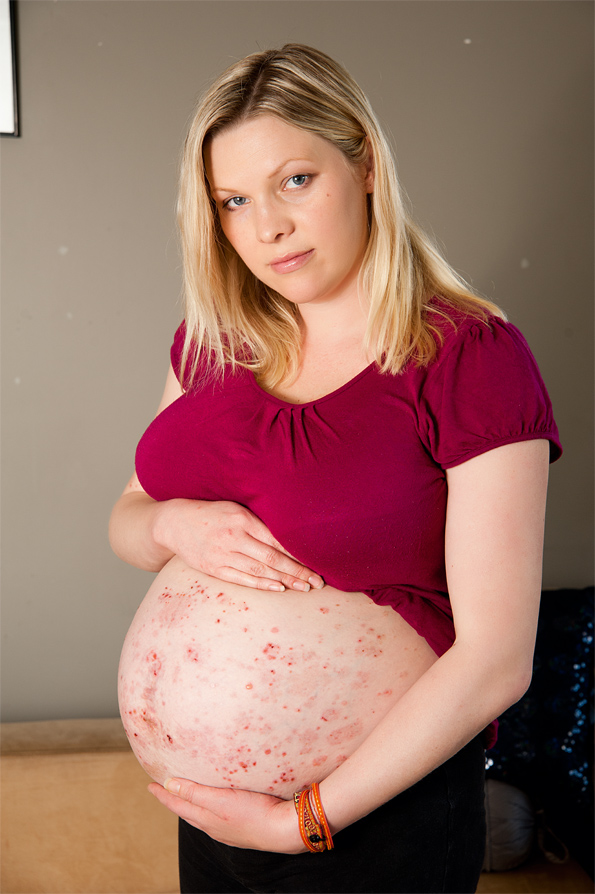
While her belly is the part of her body most affected by the rash, Nichola’s allergy has spread.
It was originally called herpes gestationis because of the blistering appearance, although it is not associated with the herpes virus. The condition affects one in 160,000 pregnant women, but Nichola is the only sufferer in New Zealand she’s aware of.
She’s now 32 weeks pregnant. It was at this time when she was pregnant with Tyler that she first experienced the painful allergy. “It started with a rash on my legs,” she explains. “At first I thought they were itchy bites, but it just started spreading.”
Nichola was initially treated for scabies, but the cream for that made her condition worse and she was placed in an isolation ward at the hospital for two weeks before giving birth.
It took a biopsy of the blisters to confirm her placenta allergy, which is also linked to a lower birth weight – Tyler weighed just under 3kg (6lb 6oz) at birth. Unfortunately, the rash didn’t clear up once she had Tyler. It took six months of taking steroids before it disappeared.
“Even once you’ve had the baby you can get flare-ups when you get your period back or if you stop breastfeeding. “They have no idea why people get it, just that it’s a reaction to the placenta. Because it’s so rare there hasn’t been much done in the way of finding ways to cure it.”
Her condition is so unusual that Nichola’s case was used as a study for Auckland hospital doctors and she wanted to share her story with New Zealand Woman’s Weekly to raise awareness about it.
This is the third time Nichola has suffered from the allergy. She was pregnant a year ago, but miscarried the baby. That time, the welts appeared even before she discovered she was pregnant. When she miscarried at nine weeks, the rash disappeared. “This time round I was so focused on having another baby that I just didn’t care.”
Since joining an online support group, PemGest, she’s learned more information about the disease. She was told it was more common with carrying a boy and when Nichola found out that she was having a girl, she had her fingers crossed that this pregnancy would be uneventful.

The rash is so painful that Nichola can barely touch her belly.
But just a few weeks ago, she could no longer ignore the awful blisters spreading across her stomach and had to seek hospital treatment. Nichola, who is vegan, was prescribed steroids two weeks ago but is hoping she won’t need to take them for as long as last time.
She says her partner, yoga instructor Russ Bathurst, and Tyler try their best to help, but there’s little they can do. “They feel helpless and no-one can go near me where it’s sore,” she sighs.
Her mother rubs onions on the sores because she says the juice temporarily relieves the burning and itching. Nichola had always dreamed of having three children, but may have to rule that out.
“After doing this twice, I don’t know if I’d want to go through it again. I’d need to have a surrogate to have another baby for me.”
